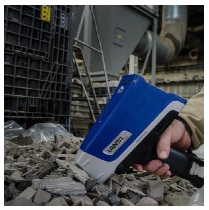THE IMPORTANCE OF RHODIUM …
POSTED BY ALICE
Rhodium: a rare metal
Over 100 times rarer than gold, Rhodium is one of the most important metals to the $2 trillion global auto industry. The importance of Rhodium is such that at one point, in 2008 it traded at over $10,000 an ounce; although more recently prices have now dropped to a more realistic $750 an ounce.
Rhodium is one of a number of metals including platinum, palladium, ruthenium, iridium, and osmium that make up the Platinum Group Metals. These metals share similar physical and chemical properties and their rarity means demand is always increasing.
Rhodium's role in catalytic converters
Rhodium is used a lot in specialty optical instruments, electronics, aircraft turbine engines, and as a jewelry finish. But Rhodium’s prime use, nevertheless, is for automobile catalytic converters. It is specifically present in three-way catalytic converters. It serves to convert harmful hydrocarbon gases from auto exhaust into less harmful substances. Autocatalyst manufacturing accounts for over 80% of the world's annual rhodium usage. Consequently demand from the automobile industry is critical for rhodium.
A very limited production...
While the short-term outlook for the auto industry may be questionable, with slower growth in places like China and Europe, global light-duty automobile demand is expected to double by 2019 and nearly triple by 2024.
That could create problems as rhodium production is extremely limited, with a year's worth of total global production able to fit on the back of just three pick-up trucks. In fact, there are fewer than 10 mines in the world that produce significant quantities of rhodium with most of those mines located in one single country - South Africa.
South African mines provide 80% of the world's rhodium supply and this concentration of mining operations often leads to extreme price volatility - it was supply shortfalls from South Africa that caused rhodium prices to spike to over $10,000 an ounce in 2008. The economic slowdown of that year eventually caught up with rhodium, leading to a collapse in prices.
It is possible, though, to recycle rhodium from old catalytic converters. An increase in recycling beginning in 2008 actually led to an oversupply in the market. This will eventually be pushing prices down to where they sit today at about $750 an ounce.
The rhodium market should remain in supply surplus in the short term. However, estimations predict a growing demand over the long term to bring back a deficit which, in theory, should make it a good investment.
How to invest in Rhodium?
However, there are serious issues with investing in the metal - indeed, until just a few years ago, there was almost no way to invest in rhodium.
Kitco sold a rhodium “sponge,” a powdered form of the metal but that was just about the only option for investment. Then, in 2009, the Cohen Mint was the first to produce .999 fine rhodium bullion rounds and bars and, more recently, the Baird Mint has introduced a line of physical rhodium bars, which are available in one- and five-ounce bars, as well as fractional sizes of one-tenth, one-quarter, and one-half ounce. However, the premiums for rhodium bullion are outrageously high; Provident Metals, for example, has a near 100% premium on a Baird Mint one-tenth-ounce rhodium bar.
Liquidity is also going to be a major issue with owning physical rhodium. An investment-size holding is going to be extremely difficult to sell and local bullion dealers are unlikely to be interested in buying rhodium when it comes time to divest.
Owning physical metal is probably best simply as a curiosity and for direct exposure to physical rhodium. An ETF would probably be the best choice for investors and Deutsche Bank launched a rhodium ETF (LON: XRH0) in 2011 that is 100% backed by the physical metal. However, the ETF doesn't trade on any of the American exchanges; meaning it might be difficult for some to buy and sell.
The main alternative, XRH0, barely trades. The average daily volume is currently 547 shares per day. So at $72, there's an average of less than $40K in daily interest in XRH0.
Compare that to one of the gold ETFs — SPDR Gold ETF (NYSEArca: GLD) trades over a billion dollars in shares per day and volume was about 3 million shares less than the three-month AVD. And that is just one of the gold ETFs.
As far as rhodium stocks go, there are no pure or even primary metal plays.
Prospects for Rhodium
Rhodium is so rare that there are simply no mines that produce the metal as a primary product. Indeed, mining companies only producing rhodium as a byproduct and these organizations all have different primary interests. Larger companies include:
- Anglo American Platinum (JSE: AMS)
- Norilsk Nickel (MCX: GMKN)
- Impala Platinum (JSE: IMP)
- Lonmin (LON: LMI)
Despite solid supply/demand fundamentals — and extreme potential upside — it is not sure that rhodium makes for a good investment. This belief is mainly due to liquidity issues and the lack of good investment platforms and general interest. Ultimately, a bet on rhodium is a bet on demand from the auto industry. And with rhodium's investment issues, either platinum or palladium makes a more realistic sound investment because they:
- Are just as vital to autocatalyst manufacturing.
- Are also much rarer than gold or silver.
- Have the same kind of concentrated supply issues.
- Have well-established investment and trading vehicles.
Source: Luke Burgess, Energy and Capital

























